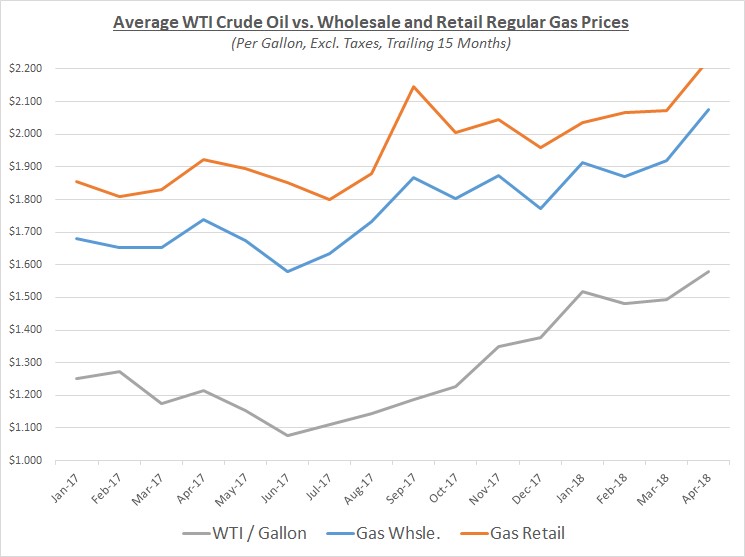Crude oil prices rose rapidly during April, gaining approximately 10% from where they started the month. Prices are about 30% higher than a year ago and have now reached levels not seen since November 2014. The following graph shows the daily price movements over the past three months:
The increase in oil prices during the first half of April was primarily caused by political tensions resulting from US-led air strikes on Syrian targets. Concerns about oil supplies being disrupted by an escalating conflict in the Middle East began to subside as diplomatic repercussions were very limited. As April moved on, oil prices traded in a narrow range while upward pressure continued. The market has been concerned about additional Middle East uncertainty from the pending May decision by the US regarding economic sanctions on Iran.
As prices for oil rose sharply during April, diesel and gas were driven higher. In addition, strong demand for refined products has continued while inventory levels have shown some declines during the month. The graphs below show the movement of crude oil (converted to gallons) along with wholesale and retail fuel prices over the trailing 15 months:
Due to the rapid increase in fuel prices during April, diesel retail margins were forced down to more typical levels while gas margins remained in their normal range. The following graph shows retail margins for diesel and gas over the trailing 15 months:
Sokolis anticipates crude oil prices will continue to fluctuate in the high-$60’s for the next couple months. Prices could reach $70 and beyond if the US decides to reimpose economic sanctions on Iran. In addition, the summer driving season is approaching which typically increases demand for fuel.
If you’re concerned about the impact of future fuel price changes for your fleet and want to know if you’re receiving the best fuel prices possible, contact Conor Proud at Sokolis, [email protected] or 267-482-6159. We are the nation’s leading independent fuel management consulting team and can help you make sure that your fuel management program is running at peak efficiency.
